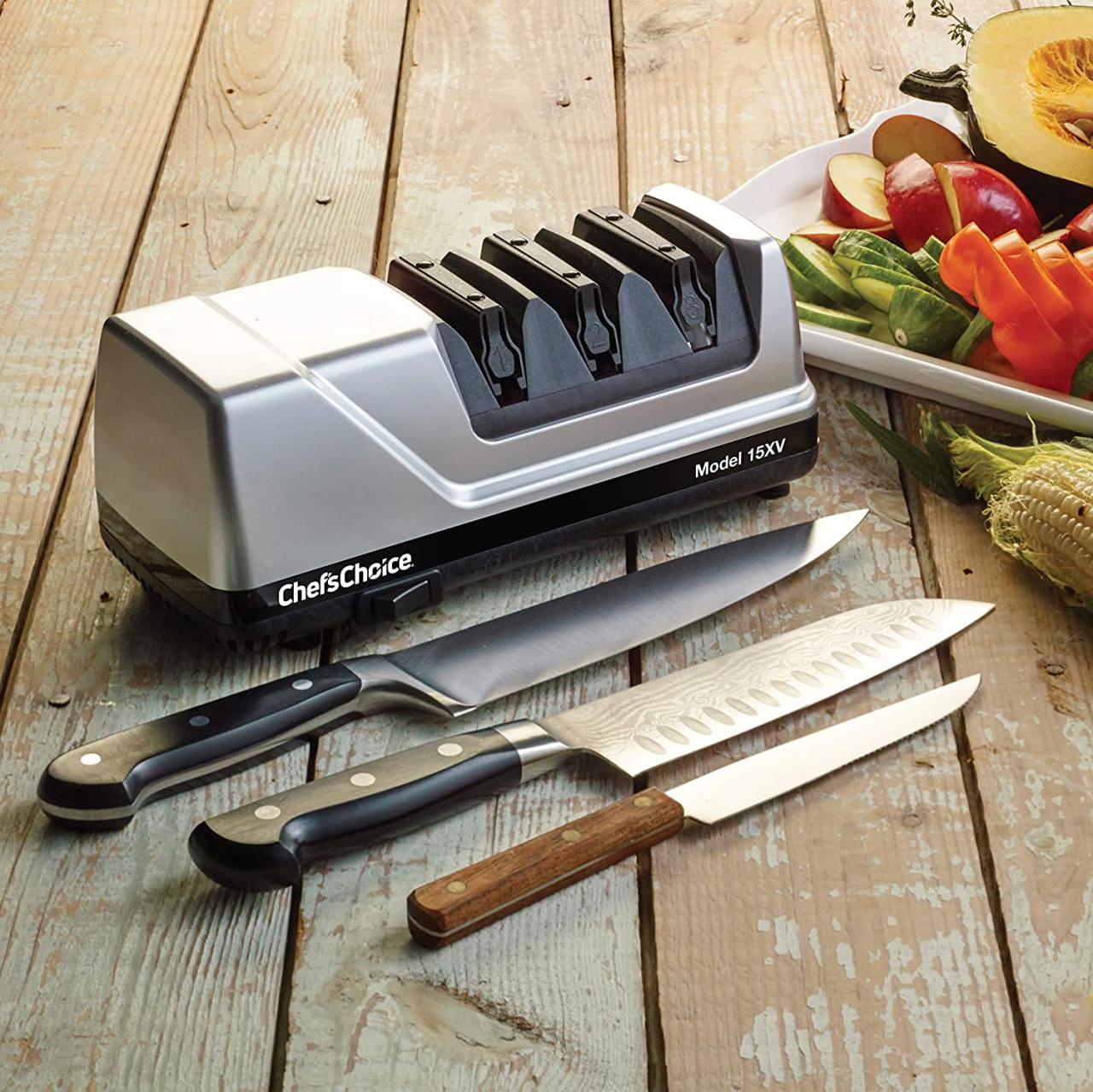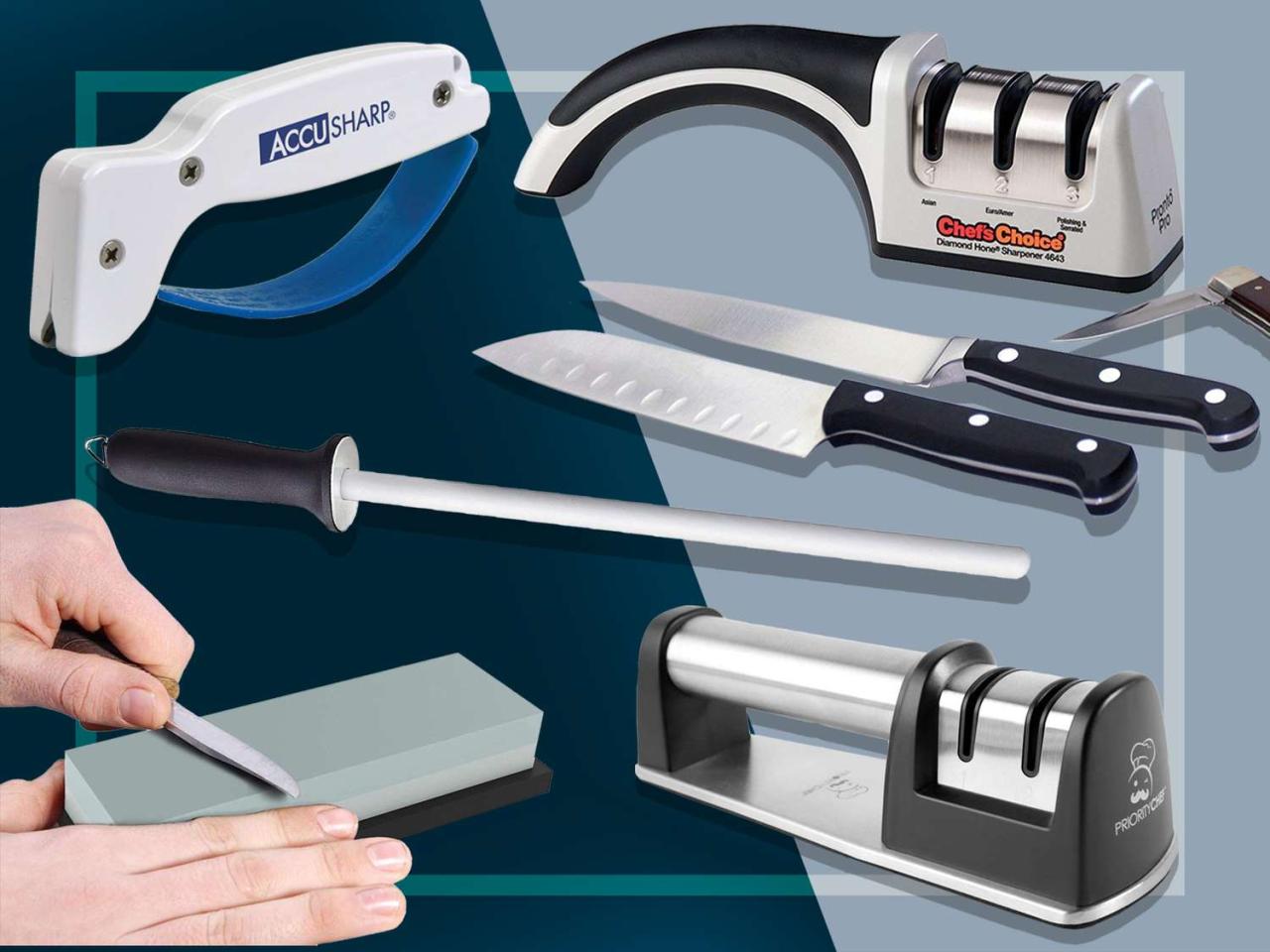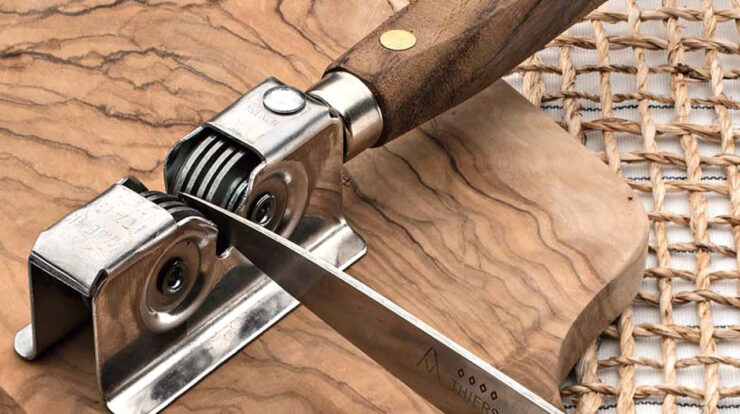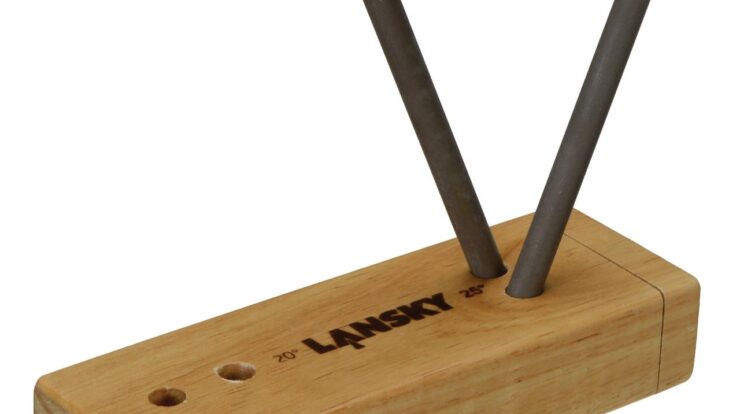Professional kitchen knife sharpeners are essential tools for any serious cook. They can restore dull knives to their former glory, making them safer and more efficient to use. In this guide, we’ll discuss the different types of professional knife sharpeners available, the factors to consider when choosing one, and how to use and maintain it properly.
Professional Kitchen Knife Sharpeners
Professional kitchen knife sharpeners are essential tools for maintaining the sharpness and precision of kitchen knives. They are designed to remove any nicks or burrs from the blade, resulting in a sharp and effective cutting edge.
There are various types of professional kitchen knife sharpeners available, each with its own unique features and benefits. Some of the most common types include:
Manual Sharpeners
Manual sharpeners are handheld devices that require the user to manually move the knife blade back and forth across the sharpening surface. These sharpeners are typically made of ceramic or diamond, and they can be used to sharpen both straight and serrated blades.
Factors to Consider When Choosing a Professional Kitchen Knife Sharpener
When selecting a professional kitchen knife sharpener, several key factors should be taken into account to ensure optimal sharpening results. These factors include the blade material and hardness, the grit level, and the adjustability of sharpening angles.
Blade Material and Hardness
The material and hardness of the knife blade determine the type of sharpener required. Softer steels, such as stainless steel, require less aggressive sharpening techniques, while harder steels, such as carbon steel, demand more specialized sharpeners. Understanding the blade material and hardness helps select a sharpener that can effectively sharpen the knife without damaging it.
Grit Level
The grit level of a sharpener refers to the coarseness of the abrasive surface. A lower grit level, such as 100 or 120, is suitable for removing large amounts of material and repairing damaged blades. A higher grit level, such as 1000 or 2000, is ideal for refining the edge and achieving a sharp, polished finish.
Adjustable Sharpening Angles
Adjustable sharpening angles allow the user to customize the angle at which the blade is sharpened. Different knives have different optimal sharpening angles depending on their intended use. For example, a chef’s knife typically requires a 20-degree angle, while a paring knife may need a 15-degree angle.
Adjustable sharpeners provide the flexibility to achieve the desired sharpening angle for any knife.
How to Use a Professional Kitchen Knife Sharpener
Sharpening your kitchen knives with a professional sharpener is a crucial step in maintaining their performance and longevity. Here’s a comprehensive guide to help you master the process safely and effectively.
Step-by-Step Guide
- Secure the sharpener:Clamp the sharpener onto a stable surface to prevent it from moving during use.
- Identify the angle:Determine the correct angle for your knife. Most sharpeners have guides that help you achieve the optimal angle.
- Hold the knife:Grip the knife firmly at the handle, with the blade perpendicular to the sharpening surface.
- Pull the knife through:Slowly and steadily pull the knife through the sharpener, maintaining the correct angle and applying light pressure.
- Repeat the process:Repeat steps 3 and 4 several times until the desired sharpness is achieved.
Maintaining the Sharpener and Knives
To ensure optimal performance, it’s essential to maintain both the sharpener and your knives.
- Clean the sharpener:Regularly wipe down the sharpening surface with a damp cloth to remove any metal shavings or debris.
- Lubricate the sharpener:Apply a thin layer of lubricant to the sharpening surface to reduce friction and prolong its lifespan.
- Sharpen regularly:As a general rule, sharpen your knives every few months or as needed to maintain their sharpness.
- Store knives properly:Store knives in a safe and dry place to prevent damage and dulling.
Safety Precautions
Always prioritize safety when using a sharpener.
- Wear gloves:Wear cut-resistant gloves to protect your hands from accidental cuts.
- Secure the knife:Ensure the knife is securely held during sharpening to prevent it from slipping.
- Be aware of surroundings:Sharpening can create sparks, so be aware of your surroundings and keep flammable materials away.
- Never leave the sharpener unattended:Always unplug the sharpener and store it safely when not in use.
Advantages of Using a Professional Kitchen Knife Sharpener
Professional kitchen knife sharpeners offer several advantages over manual sharpening methods. These devices are designed to precisely and consistently sharpen knives, ensuring optimal cutting performance and safety.
Enhanced Knife Performance
Professional sharpeners use specialized grinding wheels or stones that create a precise edge on the knife blade. This sharp edge allows for effortless slicing and dicing, reducing the force required to cut through ingredients. A well-sharpened knife also minimizes tearing and bruising of food, preserving its texture and appearance.
Improved Safety
A sharp knife is a safe knife. A dull knife requires more force to use, which can lead to slips and accidents. Professional sharpeners create a sharp edge that reduces the risk of the knife slipping or skidding, enhancing overall kitchen safety.
Cost-Effectiveness, Professional kitchen knife sharpener
While professional sharpening services may incur a cost, they can be a cost-effective solution in the long run. Regularly sharpening your knives extends their lifespan, reducing the need for frequent replacements. Additionally, well-sharpened knives perform better, reducing the time and effort spent on food preparation.
Examples of Professional Kitchen Knife Sharpeners

Professional kitchen knife sharpeners come in various types, each with its own features and benefits. To help you make an informed decision, here’s a comparison table of some popular options:
| Feature | Product A | Product B | Product C |
|---|---|---|---|
| Type | Electric | Manual | Whetstone |
| Sharpening Angles | Fixed (15°) | Adjustable (10°-25°) | Varies depending on stone grit |
| Speed | Fast | Medium | Slow |
| Ease of Use | Easy | Moderate | Difficult |
| Price Range | $50-$150 | $20-$50 | $30-$100 |
| Customer Reviews | Positive (4.5/5) | Mixed (3.5/5) | Excellent (4.8/5) |
Maintenance and Care for Professional Kitchen Knife Sharpeners
Regular maintenance is crucial for preserving the functionality and longevity of professional kitchen knife sharpeners. Neglecting proper care can lead to diminished performance, rust, and premature wear, compromising the quality of sharpened knives and the overall efficiency of the sharpening process.
Cleaning
- Wipe down the sharpener’s exterior with a damp cloth to remove any debris or food particles.
- Use a soft brush to gently remove any remaining particles from the sharpening slots or rods.
- For stubborn grime, use a mild detergent solution and a soft sponge, avoiding abrasive cleaners that could damage the surface.
Lubrication
- Apply a small amount of lubricant to the moving parts of the sharpener, such as gears or bearings, to ensure smooth operation.
- Use a lubricant specifically designed for knife sharpeners to prevent damage or corrosion.
- Follow the manufacturer’s instructions for lubrication frequency.
Storage
- Store the sharpener in a dry and dust-free environment to prevent rust and corrosion.
- Avoid exposing the sharpener to extreme temperatures or moisture.
- Keep the sharpener in its original packaging or a protective case when not in use.
By adhering to these maintenance practices, you can significantly extend the lifespan of your professional kitchen knife sharpener, ensuring optimal performance and the longevity of your sharpened knives.
Additional Tips for Sharpening Kitchen Knives: Professional Kitchen Knife Sharpener
Sharpening kitchen knives is an essential task for maintaining their performance and safety. Beyond the basics, there are several additional tips that can help you achieve optimal sharpness and prolong the life of your knives.
Techniques for Different Knife Types
Different types of kitchen knives have varying blade shapes and edge angles, requiring specific sharpening techniques. For chef’s knives, a 15-20 degree angle is ideal, while paring knives and serrated knives may require smaller or larger angles, respectively.
Honing Steels and Strops
Honing steels and strops are essential tools for maintaining the sharpness of your knives between sharpening sessions. Honing steels realign the blade’s edge, while strops polish and refine the edge, removing any burrs or imperfections.
Sharpening at Home vs. Professional Services
Sharpening knives at home can be convenient and cost-effective. However, for heavily used knives or those requiring more precise sharpening, professional services may be necessary. Professional sharpeners have specialized equipment and expertise to restore knives to their original sharpness.
Final Summary

Whether you’re a professional chef or a home cook who loves to experiment in the kitchen, a professional kitchen knife sharpener is a worthwhile investment. With proper care and maintenance, it can keep your knives sharp and ready to use for years to come.
Q&A
What is the best type of professional knife sharpener?
The best type of professional knife sharpener depends on your individual needs and preferences. Electric sharpeners are the fastest and easiest to use, but they can be more expensive than manual sharpeners. Manual sharpeners require more skill to use, but they give you more control over the sharpening process.
How often should I sharpen my knives?
The frequency with which you need to sharpen your knives depends on how often you use them and what you cut with them. A good rule of thumb is to sharpen your knives every 6-12 months, or more often if you use them heavily.
Can I sharpen my knives at home?
Yes, you can sharpen your knives at home using a whetstone, honing steel, or electric sharpener. However, it is important to use the correct technique and to practice regularly to get good results.


